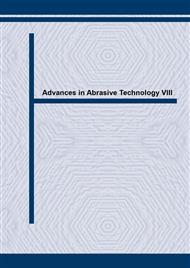p.531
p.537
p.543
p.549
p.555
p.561
p.567
p.573
p.579
A Study of Surface Integrity in WEDM-HS with Air Medium
Abstract:
In wire electro-discharge machining with high traveling speed(WEDM-HS), the emulsion is used as working liquid. Because there exists a functional electrolyte, this affects the surface quality of workpiece machined. An investigation has been made into the machining feasibility when the gas or air is employed as processing medium. The first cut on workpiece is done with emulsion, and then air or distilled water is used for the second cut and multi-cuts. After machining, the surface quality and mechanical performance of the specimen under different conditions are compared. The experimental results show that air and distilled water have little influence on the surface roughness, but they can improve the mechanical performance such as the increase of hardness and the decrease of surface cracks. An orthogonal design is adopted to optimize the electric parameters and cutting passes so as to obtain the best integrative result. The experiment with air as medium reveals that it is a feasible and effective way for eliminating the electrolytic layer and improving the surface integrity of workpiece.
Info:
Periodical:
Pages:
555-560
Citation:
Online since:
August 2005
Authors:
Keywords:
Price:
Сopyright:
© 2005 Trans Tech Publications Ltd. All Rights Reserved
Share:
Citation:


